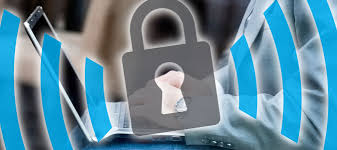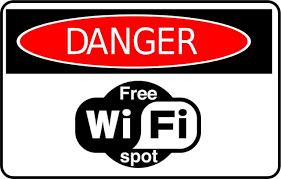How Safe Is Public Wi-Fi For Us

Wi-Fi hotspots public are everywhere. It is estimated that by 2018 there will be 14 million in the UK alone. They are certainly helpful, giving us free (or cheap, at least), Internet access and save our precious mobile data rates. But not all good news. There is always the very real risk, using Wi-Fi, and many people have no idea about the dangers and what they can do to stay safe.
So what is the problem with Wi-Fi access points, and what you can do to protect yourself? We will see.

Broadband Genie recently revised state public safety wireless and found some disturbing statistics.
The company applied in 1515 our site visitors on using Wi-Fi. 44% said they “often” make use of these services, so the tens of millions of new across the country that connect to hotspots regularly in bars, restaurants and many other places they offer.
They also sought clarification on what people actually do with Wi-Fi, and here where it becomes relative. 80% access social media, 25% shop online, 15% use online banking services, 9% to pay bills and make 7% “business related activities.” In addition, 69% use them for general web browsing and 27% for “other personal activities.”
This suggests that a significant number of people who connect to sites and services, private confidential, while connected to Wi-Fi.
But without additional protection, which is very risky. Any device connected to a Wi-Fi hotspot, you can see traffic sent and received by everyone. A hacker could sit in a cafe with a white plate and perform all kinds of attacks to intercept data unsuspecting customers access online banking or chat on social networks. Criminal entrepreneurs can even create their own access points with the main objective to capture personal data.
But the likelihood is that? It may seem unlikely, however, data is provided by security experts avast! He suggested that most users are in danger hotspots. Avast! It offers free Wi-Fi Finder app that uses Bing to try to identify safe and unsafe connections.
Data show that 75% of public Wi-Fi connections are vulnerable. Most do not use encryption so that all traffic is visible to all users with software tools available. But there are also black spots, the router is accessible from the Internet more susceptible to known vulnerabilities or have been hacked.
These are just some of the ways a hacker could steal data for users of Wi-Fi:
Using packet sniffing tools such as Wireshark open an attacker can intercept and analyze all traffic sent through a network. This is a basic method defeated by encrypted connection, but is also very easy to do and can collect passwords and e-mails if they are sent in the clear.
In a MITM attack pirates transmit data between the two sides. Each side believes that talk directly to another, but the hacker is able to listen and, if desired, modify traffic. If a hacker uses a false certificate, and the user ignores safety, MITM attacks can overcome potential HTTPS encryption to intercept passwords and other encrypted data.
If a site is not secured with HTTPS, it is possible for a hacker to hijack a Web session by intercepting cookies. To connect to social networks and the hacker can steal your identity and access your account. Tools such as Firesheep Firefox extension makes this simple concern.

There are ways to use an access point Wi-Fi public safe, but many of us do not take advantage of security tools at our disposal. A virtual private network (VPN) is a secure connection that encrypts all network traffic on the unit and routed through a proxy server. Use a VPN and even if unencrypted Wi-Fi network that hackers see only see a confusing flux.
However, our study showed that only 15% of respondents use VPN on Wi-Fi, while 44% said they knew what they were. If you want to enjoy public access points, with a high degree of security, follow these golden rules:
A VPN is a very effective way to block Internet traffic and protect against eavesdroppers and must be used every time you connect to a hotspot or other connections that are not fully controlled. These networks are generally not install or use complex, with most services necessary software and tutorials, so you can start running in no time.
There is no shortage of choice when it comes to Best VPN Provider, including many free. However, it is important to do research on the provider before signing. While a VPN can protect against hackers and other external threats point, VPN provider can theoretically intercept traffic access, so make sure you choose a reputable company.
Always use https Any service that requires a login or involving personal data shall be secured by HTTPS to encrypt communications. This is indicated by the URL begins with “https” and a padlock icon in your browser. If not, walk away. Remember that without HTTPS or other protection all traffic is visible to anyone else on the network, so behave properly when using sites unprotected.
Pay attention to safety WARNINGS- When using websites and care is encrypted with secure certificates or warnings, as this may be an indication that encryption is not configured correctly or that someone tried a MITM attack.
Maintain proper security vulnerabilities in software to date software on their devices, it can be exploited by hackers to insert malware or steal information. Make sure your operating system and applications always hit so far.
Use anti-virus You need an anti-virus tool and if there are several excellent free options, including avast! Free and Avira. After connecting to an access point, a quick scan to check unwanted nasties.
Sharing- disable the file before you connect to an access point control that there is no shared folders or drives that may be available to others on the network. This is very easy in Windows, because every time it detects a new network asking if it is a private or public connection, exchange files automatically deactivated if selected.
Do not connect automatically check your laptop or other devices that are not configured to automatically connect to open networks without realizing otherwise might connect to an unauthorized access point and accidentally expose private information.
To confirm the access point name pirate smart gimmick creates a fake access point with a name similar to a legitimate service. Before you connect to an access point, check the name.
Always use strong password unique words not use the same password more than once, and make sure that each password is long (at least 12 characters) and strong, preferably a random mix of letters, numbers and characters. To make your life easier by using a password manager like LastPass, so you do not have to remember each connection.
